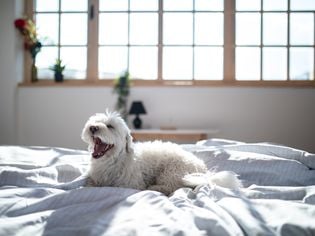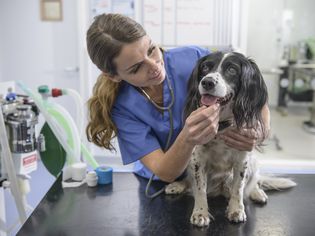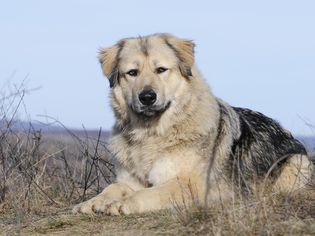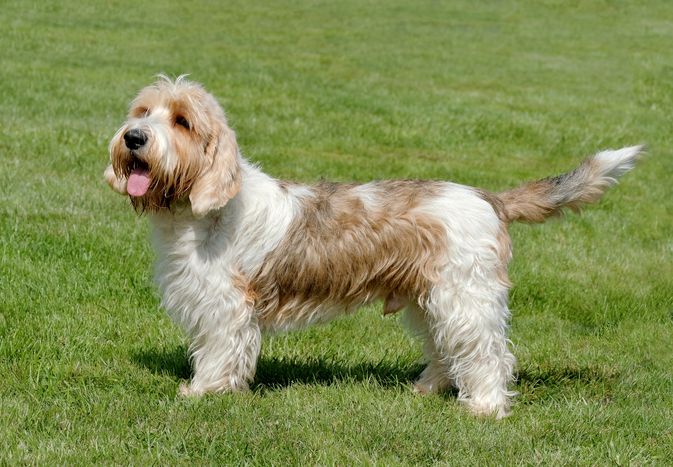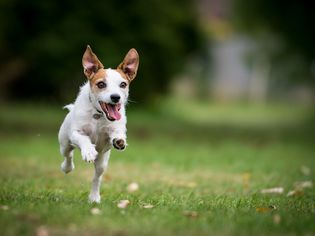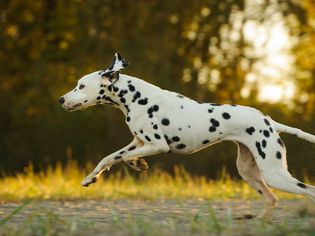It's much more common to hear about pet owners being allergic to their pets, but very few people know that dogs (and cats) can also be allergic to humans. And, it's not as rare as you probably think it is. A dog's human dander allergy is often left undiagnosed as a mysterious illness that causes skin issues for the dog. The good news is that you can treat it and take steps to prevent these allergies from occurring in the first place. Read on to learn more about this condition, its symptoms, and how to treat it.
What Is an Allergy to Humans?
A human dander allergy happens when a dog breathes in dead skin cells that humans shed daily and has an adverse reaction. Human dander is not visible, and it's airborne. An allergic dog's first reaction starts with mild skin irritation and itching, progressively worsening. Left untreated, it can become a rash or open wound or a form of atopic dermatitis, leading to a secondary bacterial or fungal infection. Your pet may experience flaky skin, loss of hair, and discomfort. It becomes a vicious cycle.
If owners do not get their dogs allergy tested, they may not ever find out what their dogs are allergically reacting to. Vets often treat a dog symptomatically, especially since it doesn't present as a chronic skin problem at first. Some dogs may respond to the initial treatment of symptoms, so you might not ever find out what they are allergic to. It's safe to say that many dogs may have human allergies; however, human dander allergies remain largely undiagnosed. Often, if a dog is prone to skin issues, they are likely allergic to multiple substances.
Dogs Allergy Symptoms
If you suspect that your dog has an allergy caused by human dander, your vet may not have a definitive diagnosis unless you get further testing. Monitor your dog to see if it is fine outdoors but scratches or sneezes when inside. If the symptoms persist indoors, human dander could be the cause.
Itchy skin looks like a skin problem and may be a case of chronic dermatitis. But, if it is accompanied by sneezing, coughing, watery eyes, and runny nose, those are not chronic dermatitis symptoms and may be a human dander allergy.
Diagnosing Dogs with Human Allergies
Allergy testing is the only way to know what your dog is allergic to. There are two types of testing: a blood test and an intradermal test (also known as a skin prick or scratch test).
Some vets will offer a blood test to check for allergies. However, veterinary dermatologists agree that blood testing or a serum allergy test is not the best method. Even if that comes back positive, your dog would need an intradermal allergy test done by a canine dermatologist for a more definitive diagnosis.
An intradermal test requires dog sedation. The dermatology specialist will need to shave a testing area to perform the test, usually on the abdomen. About 50 allergens will be injected onto the skin surface. A trained eye will watch the skin's reaction, looking for inflammation or redness at the needle prick sites. The test is relatively quick and painless.
Cost for Testing
Intradermal allergy tests can cost around $250 in addition to the examination.
How to Treat a Dog with Allergies to Humans
There is hope for dogs allergic to humans, and it's not living in isolation from people. Many dogs can live a comfortable, happy life despite these allergies. First, go to your veterinarian if your dog is itchy or has an apparent skin problem. Once the immediate skin issue is diagnosed and treated, your vet can talk to you about options, including a variety of allergy medicines.
The management of allergies is often a lifelong process. Treatment may include oral medication or a topical treatment like a corticosteroid cream. Your vet might also recommend a prescription of immunotherapy shots, which are given as injections over time to help your dog become immune to human dander. If the first prescription does little to help, your dog may need other medications.
Here are some things you can also try at home to help alleviate symptoms:
- Put your dog on a gradual elimination diet with food that does not contain soy, wheat, or yeast (common allergens). Feed your dog homemade or hypoallergenic food. Keep a diet journal to record your observations.
- Apply water-diluted apple cider vinegar (1:1 ratio) to your dog's irritated skin.
- Wash all fabrics, notably the dog bed covering. Vacuum frequently.
- Add fish oil with at least 800 mg EPA and 525 mg DHA per serving to your dog's food once a day.
- Give your dog an oatmeal bath by adding one cup of slow-cooked oatmeal to a shallow warm water bath. (Do not use an oatmeal shampoo if your dog has a yeast infection).
- Feed 1/4 teaspoon (small dog) or 1 tablespoon (big dogs) of coconut oil to your dog. You can also apply coconut oil topically to soothe irritated skin.
- Add turmeric to your dog's food.
- Apply aloe vera gel on the dog's irritated skin.
- Make a paste by mixing 1/2 teaspoon of baking soda with a bit of water and apply to the skin.
How to Prevent Human Dander Allergies
Like people who have pet allergies know, you can still live with dogs and cats even if you have allergies. Sometimes one allergic reaction can snowball and exacerbate others, so keep allergen exposure levels low. It requires some extra maintenance and a few other minor tweaks to your lifestyle to lessen allergies from affecting you or your pets.
- Maintain a clean home as a preventive measure for dogs with human dander allergies.
- Keep your dog's skin healthy through a balanced diet.
- Choose dog food with fish as the main ingredient and high-quality carbohydrates, vegetables, oats, or rice. Beef and dairy are typical offenders to dogs with food allergies.
- Give your dog anti-oxidant-rich vitamins B, C, and E supplements and fatty acid vitamins.
- Regular dog brushing helps your dog's circulation and keeps their fur healthy.
- Check with your groomer on the best schedule for your dog's grooming maintenance. Some breeds, like poodles, need more visits because their fur can get matted easily.
- Treat your dog to a bath every three to six months with a gentle shampoo that does not strip oils from the hair and skin.
Other Common Dog Allergies
- Flea bites
- Food
- Environmental allergens
- Bee stings
- Seasonal allergies
Breeds that Commonly Get Skin Allergies
Pit bull terrier
Bichon frise
Bull terrier
Spaniels
Poodles
English bulldogs
German shepherd

